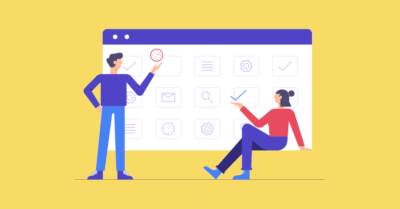Introduction In a fast-moving digital landscape where timing, consistency, and quality content rule, finding the right tools to streamline your workf
Introduction
In a fast-moving digital landscape where timing, consistency, and quality content rule, finding the right tools to streamline your workflow is critical. Whether you’re a blogger, brand manager, digital marketer, or content creator, managing content across platforms can be chaotic and time-consuming. Enter “Ypost”—a modern solution designed to bring clarity and control to your content strategy.
This in-depth guide explores what Ypost is, how it works, its features, benefits, challenges, and how to make the most of it—plus answers to common questions at the end.
What Is Ypost?
Ypost is a digital tool or platform designed for multi-channel content management. It helps you draft, schedule, publish, and track content across multiple platforms such as blogs, social media, forums, and more—all from a single dashboard.
The “Y” in Ypost can stand for “Your” or “Yield,” emphasizing personalized or performance-based posting strategies. Regardless of the name’s origin, the platform’s purpose is clear: simplify content workflows and maximize audience impact.
Why Is Ypost Gaining Popularity?
Ypost has seen increasing adoption for several reasons:
- Efficiency: It cuts down the time needed to switch between apps and websites.
- Consistency: Ensures your brand voice and schedule remain uniform.
- Automation: Handles repetitive tasks like reposting or scheduling.
- Data-Driven: Tracks engagement, clicks, and audience behavior to inform strategy.
- Collaborative: Makes team-based content production smoother and faster.
Core Features and Benefits
1. Centralized Dashboard
Control all your platforms from one interface. Schedule blog posts, tweets, Instagram reels, and LinkedIn updates without logging into separate accounts.
2. Content Calendar
Visualize your entire posting plan in a calendar view. This keeps you organized and helps spot content gaps early.
3. Drafting & Approval Workflows
Write drafts, assign to editors, request feedback, and approve—all in-app. Ideal for agencies or businesses with layered content teams.
4. Auto-Scheduling
Ypost can suggest optimal posting times based on audience engagement data or automatically queue your content.
5. Performance Analytics
See which content performs best, broken down by views, clicks, shares, and more. Use this data to refine future campaigns.
6. Media Embedding
Upload images, videos, PDFs, polls, or even audio to add engagement to your posts. No external tools required.
How to Get Started with Ypost
Step 1: Create Your Account
Register on the Ypost platform and choose a plan that matches your needs—Free, Professional, or Enterprise.
Step 2: Connect Channels
Link your blog, social media, and email accounts. This enables centralized scheduling and performance tracking.
Step 3: Build Content Templates
Create reusable formats for blog posts, image posts, and announcements. Templates save time and improve consistency.
Step 4: Draft and Schedule Content
Start drafting your upcoming content. Use the calendar to choose specific publishing dates and times.
Step 5: Assign Roles
Add team members and assign permissions—writers, editors, managers. Set up approval flows to ensure quality control.
Step 6: Monitor and Analyze
Once published, review performance metrics to gauge effectiveness. Adjust strategy as needed.

Best Practices for Using Ypost Effectively
- Plan Weekly or Monthly Content in Advance: Avoid last-minute rushes and ensure a steady content stream.
- Use Performance Data to Inform Strategy: Focus on high-engagement formats or topics.
- Batch Content Creation: Set aside specific time blocks to create multiple pieces of content at once.
- Incorporate User Feedback: Track comments and engagement to shape future topics.
- Automate Routine Posts: Use recurring templates and scheduled posting for predictable content like reminders or quotes.
- Diversify Channels: Don’t post only on one platform. Use Ypost to maximize reach.
Common Challenges with Ypost (and How to Fix Them)
| Challenge | Solution |
| Platform Learning Curve | Use Ypost’s tutorials and onboarding guides. Most platforms offer demos. |
| Too Many Scheduled Posts | Prioritize and limit your calendar to high-value content. Quality over quantity. |
| Approval Delays in Teams | Set firm deadlines and auto-reminders for reviewers and approvers. |
| Underperforming Content | Reassess your audience targeting and content type. Use A/B testing. |
| Channel API Limits | Stagger posts or upgrade plans if you’re hitting API or scheduling restrictions. |
Real-World Use Cases
1. Small Business Marketing
A bakery uses Ypost to schedule Instagram photos, Facebook updates, and blog recipes. They save 10 hours weekly and increase local engagement by 40%.
2. Freelance Content Creator
A travel blogger uses Ypost to publish trip summaries on their blog, repurpose content for newsletters, and auto-post updates to X (formerly Twitter).
3. Corporate Communications Team
An HR team uses Ypost to announce company events, internal policy changes, and social impact initiatives—across internal portals and LinkedIn.
Future of Ypost
Expect to see Ypost platforms evolve with the following trends:
- AI Integration: Auto-generate post copy, analyze tone, suggest topics.
- Smart Scheduling: AI-based predictions for optimal post timing.
- Voice-to-Post Tools: Speak your content idea; Ypost converts it into text.
- Augmented Analytics: Understand not just what works, but why it works.
- Stronger Integrations: More third-party apps, CRMs, and eCommerce plug-ins.
Conclusion
Ypost is more than just a scheduling tool—it’s a content command center. Whether you’re working solo or with a team, it provides the organization, insight, and automation needed to manage a winning content strategy. With the right setup and discipline, Ypost can help you scale your content reach, stay consistent, and ultimately grow your audience or brand presence.
Frequently Asked Questions (FAQs)
Q1. What does Ypost actually do?
Ypost is a centralized tool for scheduling, publishing, and tracking content across blogs, social media, and other platforms.
Q2. Is Ypost suitable for individuals or only teams?
Both. Individuals benefit from simple scheduling and analytics, while teams use advanced collaboration and workflow tools.
Q3. Can I post to all social platforms at once?
Yes. Most versions of Ypost allow simultaneous posting to multiple platforms with customized content per channel.
Q4. Does it support visual media?
Absolutely. You can upload images, videos, audio files, and even interactive content like polls.
Q5. What if my content needs approval before posting?
Ypost offers built-in workflows for draft review and approval before publishing, ideal for businesses and agencies.
Q6. Can I track how well my content performs?
Yes. Performance dashboards give you metrics like engagement rate, reach, and link clicks.
Q7. Is it beginner-friendly?
Yes. While feature-rich, most Ypost tools are designed with intuitive interfaces and tutorials for easy use.
Q8. Are there limits on scheduled posts?
That depends on your plan. Free versions may have limits, while premium plans often allow unlimited scheduling.
Q9. Does Ypost offer mobile access?
Many versions offer mobile apps or responsive web platforms so you can manage posts on the go.
Q10. How is Ypost different from other schedulers?
Ypost often includes deeper workflow tools, smarter AI suggestions, and broader platform integration than basic schedulers.
Must Visit: spotlightlive




COMMENTS